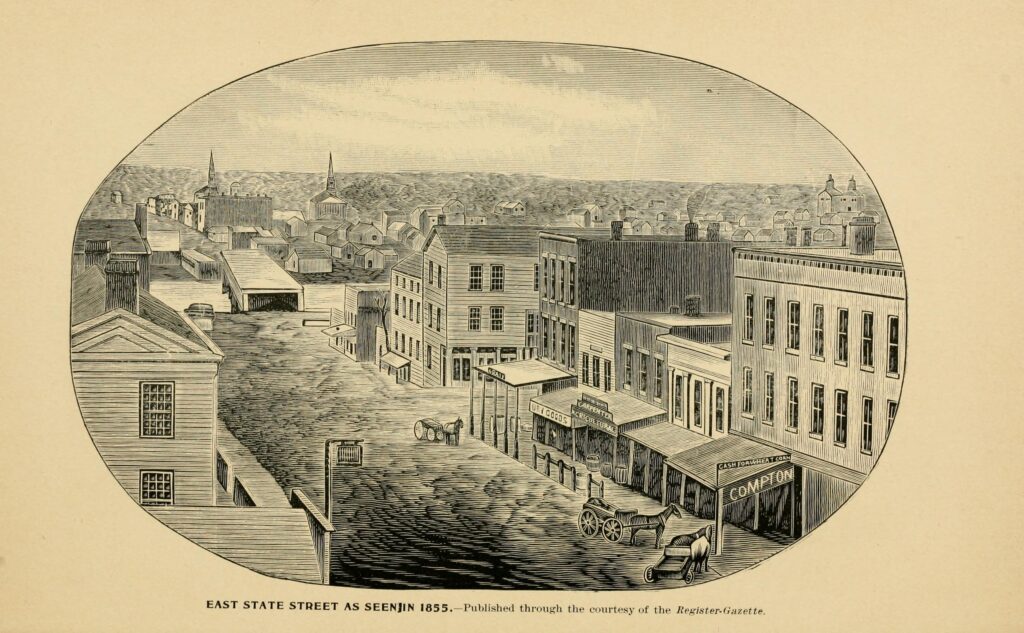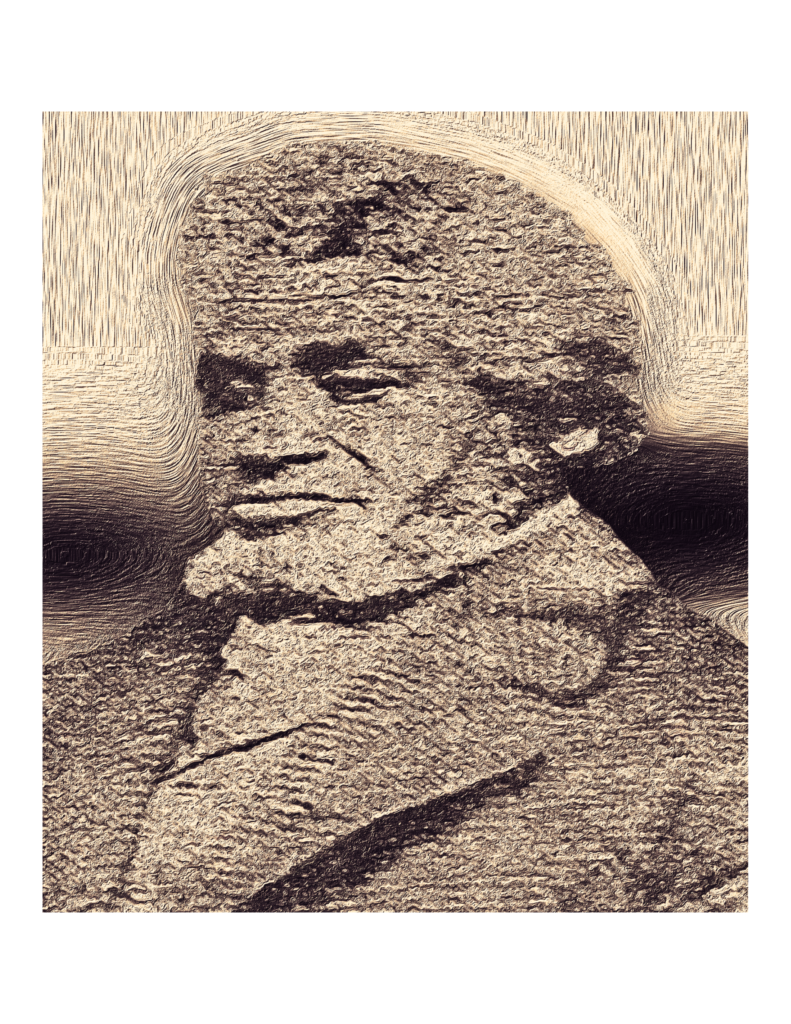- Home
- About Us
- Housing
- Resources
- Contact Us
-
-
-
Address: 223 S. Winnebago Street Rockford, IL 61102
Phone: 815-489-8500
-
-
- Updates
-

Address: 223 S. Winnebago Street Rockford, IL 61102
Phone: 815-489-8500
Address: 223 S. Winnebago Street Rockford, IL 61102
Phone: 815-489-8500


In the balmy month of June in 1834, Thatcher Blake, a man embodying the dual roles of a schoolteacher and a farmer, embarked on a journey from his hometown of Oxford, Maine, seeking fortune and fame in the distant “far west.” With no fixed destination in mind, he traversed various locales, occasionally crossing paths with veterans of the Blackhawk War. Their vivid tales painted a picture of the Rock River country, extolling its beauty and the rapid accumulation of wealth in the Galena mines.
Rather than being swayed by the allure of Galena’s mineral riches, Blake found himself captivated by the fertile lands of the Rock River valley, envisioning a potential home for life. Undeterred, he set out to explore the valley, accompanied by others. The culmination of their journey brought them to Rock River, where they gracefully navigated its silvery waters until reaching the mouth of a creek named in honor of one of its discoverers—Germanicus Kent.
It was a tranquil August afternoon in 1834 when they landed, wearied from the arduous journey. Their makeshift camp by the creek became a temporary sanctuary, and as the sun dipped below the horizon, they succumbed to the embrace of rest and slumber. The following morning, fueled by a camp breakfast, they embarked on an exploration of their surroundings. The reports of the valley’s beauty and soil fertility, previously heard in tales, were now confirmed by their own eyes.
As the day unfolded, Blake chose a spot for his future farm, while Kent envisioned a location for a sawmill along the creek that would bear his name. Little did they know that this seemingly modest decision would be the catalyst for the emergence of one of the greatest manufacturing centers in the western frontier.
Their vessel, a humble canoe or dugout, was propelled by Lewis Lemon, a young boy of color whom Mr. Kent had brought from Alabama. The journey included a brief pause at the mouth of what would later be known as Kent’s Creek—a place laden with historical significance, where Germanicus Kent and Thatcher Blake had set foot on that memorable August day in 1834.

During this Black History Month, let us turn our attention to the celebration of pivotal black figures and their profound moments in history. Today, we shine a light on one such individual, a foundational figure in the establishment of Rockford, Illinois—Lewis Lemon. Born into slavery in the year 1812 in North Carolina, Lewis faced a future devoid of hope, much like many other child slaves of his time. However, fate took an unexpected turn after seventeen years, altering not only his life but his entire destiny.
Lewis’s journey saw a transformative shift when his master, Orrin D. Lemon, relocated him from North Carolina to Alabama. It was in Alabama that Lewis found himself offered for sale as a slave for a staggering sum of $450—an amount that, when translated into today’s currency, surpasses $16,000. Seemingly at the mercy of the transaction, a shrewd businessman named Germanicus Kent stepped forward to acquire young Lewis, presumably with the intention of employing him as a house servant.
In the aftermath of this transaction, Lewis Lemon underwent a significant change in identity, now being recognized as “Lewis Kent,” a customary practice where the last name of the master was bestowed upon the enslaved individual. This act, while reflecting the troubling historical context, marks a pivotal chapter in the life of Lewis Lemon, setting the stage for his subsequent contributions and role in the founding of Rockford, Illinois. As we reflect on Black History Month, let us honor and acknowledge the resilience and fortitude displayed by individuals like Lewis Lemon in shaping the narrative of our shared history.
Lewis Lemon, an integral member of the Early Settlers Society, became a prominent figure in Rockford. His legacy continued as he contributed to the community by growing vegetables on Kilburn Street and participating in the city’s development. Lewis passed away in 1877, but his story was resurrected in 1995 when an eighth-grade class from Wilson Middle School discovered his unmarked gravesite. In tribute, they placed a gravestone that poignantly read, “Born a Slave—Died Free.”


“In 1877, Lewis Lemon breathed his last in Rockford. The Old Settler Society, moved by a sense of duty and respect, covered the expenses for his coffin, hearse, and final medical visit. Thatcher Blake and fellow society members were adamant about affording Lewis a burial befitting his worth.
The ceremony drew a gathering of esteemed individuals, including Judge Church, John Platt, Jesse Blain, John Brady, T.J.L. Remington, Hon. Ephraim Sumner, Charles Works, Thatcher Blake, and other early settlers. Their presence marked a collective expression of regard for a fellow pioneer, whose modest beginnings did not diminish the respect earned through unwavering dedication to the duties he undertook. In this solemn moment, the community paid tribute to Lewis Lemon, recognizing his enduring legacy in the fabric of Rockford’s history.”
Today, Lewis Lemon is officially recognized as one of Rockford’s three founders, and an elementary school bears his name. His story serves as a testament to the resilience and determination of an African American man who, once enslaved, forged a path to freedom and made enduring contributions to the city of Rockford.
Renowned sculptor Gene Horvath, a key figure in Rockford’s artistic history, is set to reclaim the spotlight as one of his significant works, “Pulling Together,” prepares to return to public view after an eight-year hiatus.
Horvath’s artistic journey commenced with serigraphs of historic Rockford homes, earning him recognition in local art circles. His breakthrough came in 1972 with a solo exhibit at Burpee Museum, marking a turning point in his career. What began as part-time sculpting while working at Howard Monk & Associates evolved into a full-time pursuit upon his retirement in 1986.
At the time of his passing in 1995, Horvath’s portfolio included sculptures scattered across Rockford, Rock Island, Dallas, and Chandler, Arizona. Despite the visibility of his works, such as “Pulling Together,” which features Rockford’s founders—Germanicus Kent, Lewis Lemon, and Thatcher Blake—Horvath’s sculptures often go unnoticed by the public.

Fast forward to 2024, and “Pulling Together” is poised to reclaim its place in Rockford’s landscape after spending eight years in storage. This 48-year-old statue, depicting the founders navigating a swamp in 1834, is a testament to Horvath’s artistry. Its imminent return is made possible by a $200,000 allocation from the city, aligning with Rockford’s commitment to public art.
The sculpture, emphasizing the crucial role of Lewis Lemon and correcting historical oversights, will find a new home at Founders Landing in Davis Park. The decision to restore and display “Pulling Together” reflects the city’s dedication to preserving its diverse history and celebrating the contributions of artists like Horvath.
As Rockford eagerly anticipates the unveiling of “Pulling Together,” the initiative underscores the importance of public art in preserving local history and honoring the artists who have shaped the city’s identity.
The sculpture, emphasizing the crucial role of Lewis Lemon and correcting historical oversights, will find a new home at Founders Landing in Davis Park. The decision to restore and display “Pulling Together” reflects the city’s dedication to preserving its diverse history and celebrating the contributions of artists like Horvath.
For more information, Rockford Housing Authority’s website.
Article Source: Rockford Housing Authority News – January 2019

To continue to create strategic partnerships with community stakeholders, design a diverse housing portfolio, leverage social service programming to unite and ensure residents are provided with safe and nurturing environments that lead to self-sufficiency, responsibility, and individual empowerment.
This Earth Day, let's unite for a brighter future!
Today, we're reminded of the importance of our planet and the role each of us plays in protecting it.
View the RHA Earth Day 2024 Blog here:
https://rockfordha.org/earth-day-2024/
Effective today, Monday, April 22, 2024, the current RHA Low-Income Public Housing (LIPH) Family Waiting List will open until further notice. Pre-applications can be completed online at https://www.rockfordhousingauthority.com/ and are available at 223 S. Winnebago Street Rockford, IL 61102.
#RHA
Let's come together to celebrate Diversity Month by acknowledging the beauty found in our distinct backgrounds, viewpoints, and identities. #RHA #MovingForwardTogether

Within 5 years the RHA will re-establish itself as high performing agency that is a leader in housing and sustainable communities by developing additional, non-HUD revenue streams, increasing our asset base and offering state of the art resident initiatives.